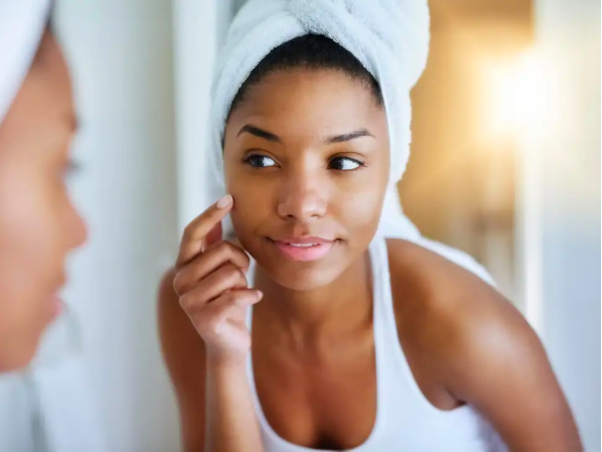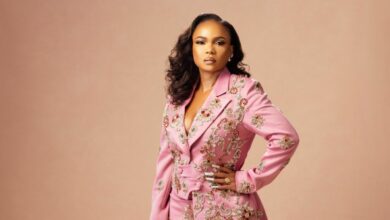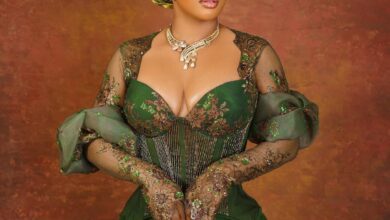The Nigerian 5 Step Skin Process

The Nigerian skin is very delicate, just like any other skin type. What’s more is it also has different shades, which could range from golden to bronze shade. Like other kinds of makeup processes, the Nigerian skin beautification process follows two goals: concealment and enhancement. This means that beautification of Nigerian skin aims to conceal flaws and enhance the natural assets of the Nigerian woman. The steps in doing a Nigerian makeup can be methodical and involves several steps, but can be generalized into 5 steps.
Skin Cleansing and Moisturization
Cleansing
Cleansing is important in hot and humid Nigerian temperatures because the skin produces more sweat and sebum than normal, making your skin feel sticky and oily. Thus, washing should be done twice daily, in the morning and at night, before you sleep. The reason for this routine is to help clean oil and dead skin cells due to heat and sweat and also for the prevention of accumulation of dirt on the skin. It is important to wash in the morning before applying serums, moisturizers or makeup in order to feel refreshed and have the first step of hydration. Later in the day, you will also feel the benefits of washing in the morning when you observe that your skin is no longer as sweaty and oily as before. An evening wash and cleansing is important in removing the makeup applied during the day and reducing excess oil produced in the skin. Evening cleansing can also make the skin feel refreshed, gives the feeling of breathability and allows exposure to oxygen for skin cell regeneration.
Moisturization
Moisturization is the second step in caring for the skin. Applying a moisturizing cream or lotion on the surface of the skin is the best way to keep moisture locked in the pores of the skin and hydrating for a full, healthy and comfortable feeling. Apply a moisturizing cream that has matting effect for oily skin, intensive, natural oil-based moisturizing for dry skin and mild moisturizing for normal skin.
Makeup Foundation and Concealer Application
Makeup Foundation
The makeup foundation or primer functions as a barrier between cosmetics and the epidermis or outer skin layer. Also, it helps retain skin moisture, providing a protective covering while promoting even distribution of other cosmetic products. A great makeup foundation increases the length of time a makeup stays in place and makes the color richer and brighter.
Concealer
The concealer comes next to the foundation to add a touch of flaw suppression. It is needed to hide dark circles around the eyes, under eye wrinkles and eye bags. Rejuvenating ingredients such as collagen, retinoids or vitamin E are preferred for concealers to give the skin a longer healthy glow. The concealer color should match the color of the skin and foundation.
Face Sculpting with Tonal Cream and Highlighter
Tonal Cream
The tonal cream is the next in line for the process of face sculpting. It serves as a secondary primer for makeup application and also evens out the skin tone further for a balanced texture and glow.
Remember that for each makeup step, give them an interval of at least one minute before proceeding to the next cosmetic application. This gives enough time for the applied cosmetics to stay firmly established on the skin.
Highlighter
For carrying out the sculpting of the face, the application of the highlighter will depend on the shape of the face. You can adjust the hues and the shades depending on the parts of the face that need to accentuated and parts that need darkening.
The highlighter is a cosmetic product that is specifically made for accentuating the prominent and beautiful features of the face. It cannot be applied just anywhere on the skin and should not be randomly placed on the skin. The highlighting can work in tandem with contouring and can also be done independently of each other. Apply highlighter to the tip of the nose to give it an attractive, slimmer look. The cupid’s bow or the outer boundary of the upper lip, can also be highlighted to make the lips look fuller or pouty. Applying highlighter to the brow-bone can make the eyebrows look more arched, giving the face an uplifted look. Highlights can also be applied to the forehead and cheekbones to give the face a fuller look, making it look more heart-shaped and removing emphasis on the jaws. This application can vary depending on the natural shape of the face.
Accentuating the Beauty of the Eyes
The eyes are indeed the windows to the soul, and should therefore be adorned with the appropriate amount of eyeshadows and eyeliners. The cosmetic application should not be limited to the eyes, but also to the area around it, such as the eyebrows.
Drawing the Eyebrows
Drawing the eyebrows is one of the fundamental parts of Nigerian makeup. Before proceeding with shaping and drawing the eyebrows, the eyebrows should be evened out and leveled by removing excess hairs and trimming overgrown eyebrows. The contour should then be applied to the entire area around the eyebrow, and then proceed with the shading. You can then draw the most appropriate shape and play with the shades by using brown pencil and different types of shadows.
Beautifying the Eyes
For the eyes, pencils, eyeshadows and eyeliners are the basic cosmetic tools. For choosing a shade, use a black/brown pencil and 2-3 light should do the work. Matte eyeshadows are the preferred application, but latest trends show that glitter eyeshadows are the popular choice among Nigerian ladies even for daily application.
When applying shadows, use an applicator or a brush. For a great effect, apply light shadows on the inner part of the eyelid, and dark shadow on the outer part. The final touch is the mascara.
Finishing Touches: Cheeks and Lips
Blush
The blush is one of the final touches to keep the beautification process. The skin color and the shape of the face should be taken into account when applying blush. Use lighter shades to complement the highlights and you can also use a bronzer for darkening certain areas of the skin to emphasize the skin glow.
Lipstick or Lip Gloss
Lipstick or lip gloss application comes as the final step in the makeup process. The preference for choosing either lipstick or lip gloss depending on the purpose of beautifying the lips. If you wish to change the color of your lips and give it a colorful vibe, go for the lipstick. If you wish to give texture and shine to your lips and go minimal on color, the lip gloss should be your choice.
Making the Makeup Stay Longer
There can be events or occasions where it is important that the makeup stays on for several hours. To do this, you will need a fixator or a setting spray. When choosing a setting spray, consider your skin type. For dry skin, choose alcohol-free sprays with moisturizing properties. For naturally oily skin, choose an oil-free spay that gives a matte finish.
Different skins need different steps in beautification. The Nigerian skin process for makeup and skin care has a distinct set of process. Skin care and beauty processes that are designed for a specific skin type need to be followed to draw out the natural beauty and a healthy glow of the skin. If you are working in the cosmetic field, knowledge about certain skin types and delicate processes can help you to be more adaptive to a wider range of clients. For personal application, tips on skin processes can be helpful for your skin’s beauty and wellness.




